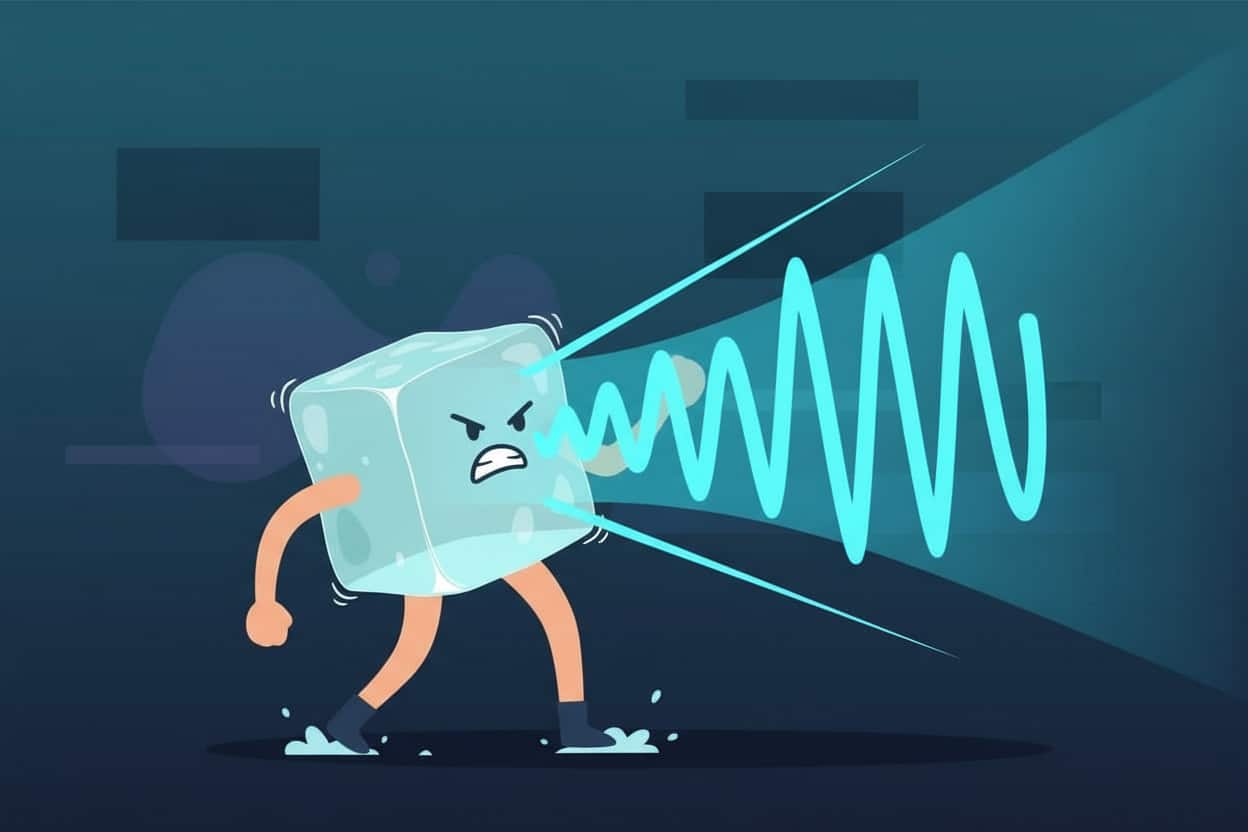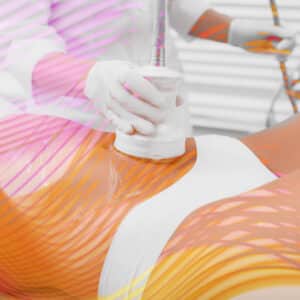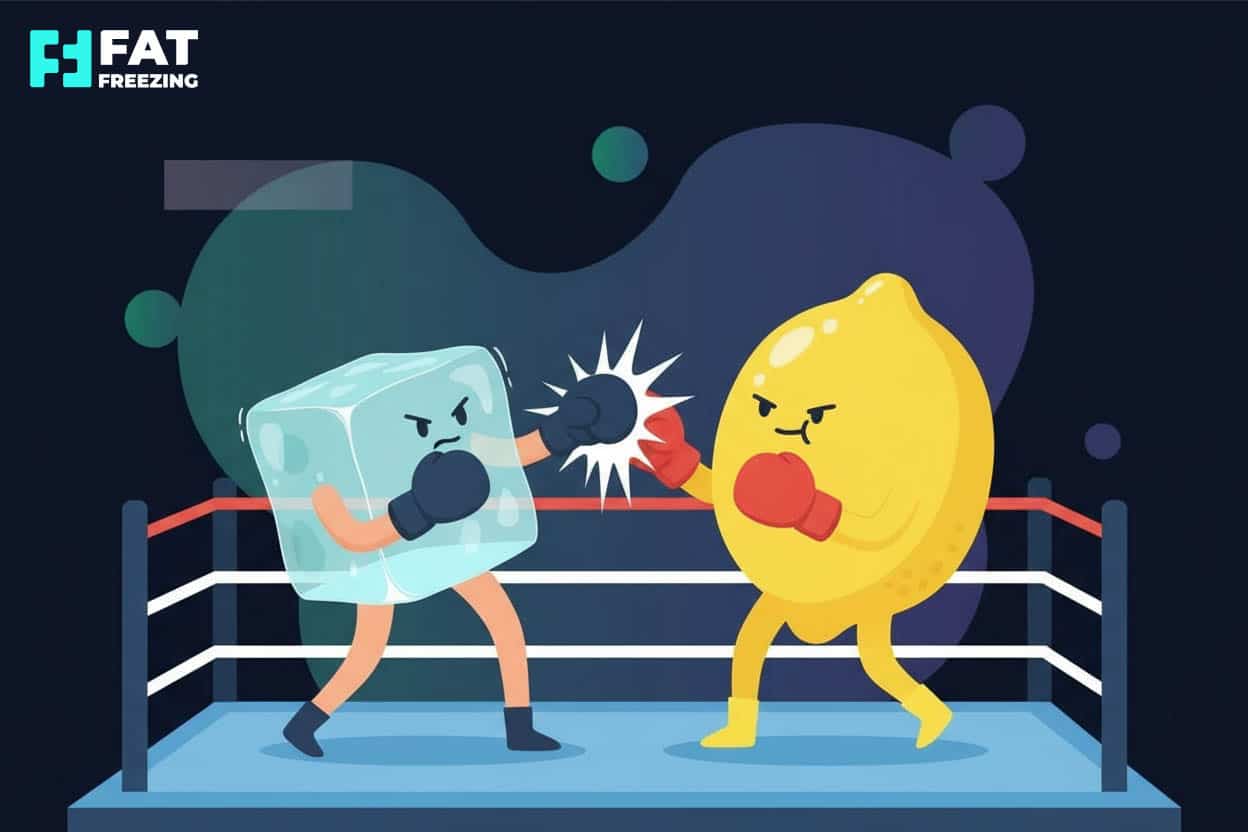When it comes to non-invasive fat reduction treatments, Fat Freezing (Cryolipolysis) and Ultrasound Cavitation are both highly popular options. While both aim to reduce fat and improve body contouring, they work in different ways. Here’s a quick breakdown of what each treatment offers and the possibility of combining them for enhanced results.

Fat Freezing (Cryolipolysis)
- What it is: A non-surgical treatment that uses cold temperatures to freeze and destroy fat cells.
- How it works: The targeted fat area is cooled to a temperature that causes fat cells to freeze and gradually die. Your body then naturally eliminates the dead fat cells over time.
- Results: Up to 25% fat reduction per session, with visible results after about 2–4 months. Results can continue to improve for up to 6 months.
- Safety: Well-researched and generally safe, though a rare risk is paradoxical adipose hyperplasia (PAH)—abnormal fat growth in the treated area, requiring surgery to correct.
- Best for: People looking for non-invasive, gradual fat reduction in areas like the abdomen, thighs, or chin.
Ultrasound Cavitation
- What it is: A non-invasive fat-reduction treatment that uses high-frequency sound waves to break down fat cells.
- How it works: Ultrasound waves create pressure changes that form bubbles inside fat cells. These bubbles burst, causing the fat cells to break down and release their contents, which are then naturally eliminated by the body.
- Results: Visible results after 2–4 sessions, with up to 20% fat reduction. Results may vary based on the area treated and individual body types.
- Safety: Generally safe, with some minor side effects like redness, mild bruising, and temporary tenderness. It’s non-invasive and has no downtime.
- Best for: Individuals looking for a quick, non-surgical solution for fat reduction in smaller areas like the thighs, arms, or love handles.
Key Differences Between Fat Freezing and Ultrasound Cavitation
| Feature | Fat Freezing (Cryolipolysis) | Ultrasound Cavitation |
|---|---|---|
| How It Works | Cold temperatures freeze fat cells, which are then eliminated by the body | High-frequency sound waves break down fat cells, which are then absorbed by the body |
| Treatment Duration | Typically 35–60 minutes per area | 20–40 minutes per area |
| Sessions Required | 1–3 sessions, depending on the area | 2–6 sessions (usually spaced 1–2 weeks apart) |
| Results | 20%–25% fat reduction per session; visible results in 2–4 months | Up to 20% fat reduction; visible results after 2–4 sessions |
| Common Side Effects | Temporary numbness, bruising, tenderness, redness | Mild redness, tenderness, mild bruising, slight swelling |
| Best for | Larger areas like abdomen, thighs, and flanks | Smaller areas like love handles, arms, or thighs |
Combining Fat Freezing and Ultrasound Cavitation: Can They Work Together?
Both Fat Freezing and Ultrasound Cavitation offer effective fat reduction in their own right, but when used together, they can complement each other for a more comprehensive approach to body contouring.
How the combination works:
- Fat Freezing targets and freezes the fat cells, effectively reducing fat thickness in the treated area over time.
- Ultrasound Cavitation, on the other hand, breaks down fat cells and helps eliminate stubborn fat that may remain after fat freezing, improving the overall contour.
Benefits of Combining the Two:
- Enhanced fat reduction: Fat Freezing can significantly reduce fat thickness, and Ultrasound Cavitation can help break down any remaining fat pockets.
- Faster results: While Fat Freezing takes time to show its full effects (2–4 months), Cavitation may show faster results after 2–3 sessions, helping speed up the process.
- Improved skin tone: Ultrasound Cavitation has been known to stimulate collagen production, potentially improving skin firmness and reducing sagging in the treated area. This can enhance the smoothness of the skin after the fat reduction.
Treatment Sequence:
- Fat Freezing first: Start with Fat Freezing to target and reduce the overall fat in the area. After a few months (once the fat reduction has occurred), you can follow up with Ultrasound Cavitation to target any remaining fat pockets and enhance the results.
- Ultrasound Cavitation first: In some cases, Cavitation may be used first to break down stubborn fat before Fat Freezing is used for a more defined, final contour.
How to Approach Combining Treatments:
- Consultation required: It’s important to work with a certified practitioner who can assess your body and decide whether combining the treatments is right for you. The timing, number of sessions, and areas to target should all be tailored to your needs.
- Spacing between treatments: It’s usually recommended to have at least 4–6 weeks between Fat Freezing and Cavitation to allow the body time to process and eliminate the fat cells.
Which Should You Choose: Fat Freezing, Ultrasound Cavitation, or Both?
- Choose Fat Freezing (Cryolipolysis) if you want a non-invasive, gradual reduction with proven long-term results and are okay with waiting for 2–4 months for visible changes.
- Choose Ultrasound Cavitation if you prefer a quick solution with minimal downtime, particularly for smaller, more targeted areas like love handles or arms.
- Combine Both if you want to maximize fat reduction and contouring. Fat Freezing can kickstart the fat reduction, and Ultrasound Cavitation can refine and enhance the final results, especially in smaller, harder-to-treat areas.
Final Thoughts
- Fat Freezing is ideal for those who want a long-term solution for larger areas, like the abdomen and thighs.
- Ultrasound Cavitation offers a faster, non-invasive approach for smaller fat areas.
- Combining the two can provide the best of both worlds: initial fat reduction followed by refinement and contouring.
Ultimately, the right choice depends on your body type, goals, and how quickly you’d like to see results. A consultation with a trained professional is essential to determine the most effective treatment or combination for your needs.
References
- Cryolipolysis systematic review—percent reductions, mechanism and time course: Ingargiola MJ et al., Plast Reconstr Surg (2015). PMC
- PAH after cryolipolysis—multicentre series (8,658 cycles): Nikolis A & Enright KM, Aesthetic Surg J (2021). PubMed
- Focused ultrasound RCT (sham‑controlled)—waist reduction & safety: Jewell ML et al., Plast Reconstr Surg (2011); plus 24‑week safety follow‑up (2012). PubMed
- Ultrasound (non‑focused) RCT—10 × 20‑min sessions; mixed outcomes: Lopes JSS et al., ASJ Open Forum (2020). OUP Academic
- Combination trial (cryolipolysis + cavitation)—no added benefit vs cryolipolysis alone: Khedmatgozar H et al., Diabetes & Metabolic Syndrome (2020). PubMed
- UK safety signposting: Save Face (PSA‑accredited register) and NHS advice on choosing a practitioner. PSA




